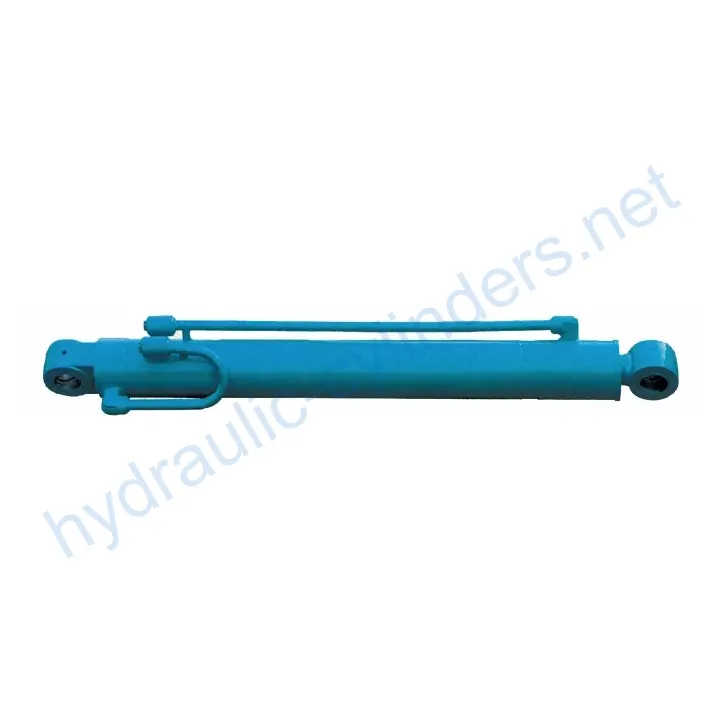Arm Cylinder For Case Middle Excavator CX21B-EM
In qualità di uno dei produttori, fornitori ed esportatori di prodotti meccanici, offriamo cilindri idraulici e molti altri prodotti.
Per maggiori dettagli, contattateci.
Posta:sales@hydraulic-cylinders.net
Produttore fornitore esportatore di cilindri idraulici.
Arm Cylinder For Case Middle Excavator CX21B-EM
Introduction
The arm cylinder is a specially designed hydraulic cylinder that is primarily used to provide linear motion and power to the arm of various machinery, such as excavators, cranes, and robotic arms. The arm cylinder plays a crucial role in hydraulic systems, enabling efficient movement and control of attachments or accessories. These cylinders not only ensure smooth motion but also withstand heavy loads, ensuring high efficiency and reliability of the machinery under various operating conditions.

Features
-
High Efficiency Power Transmission
The arm cylinder provides powerful linear motion and force, ensuring high performance of the mechanical arm in various operations.
-
Precise Control
Through the hydraulic system, the arm cylinder enables precise motion control, making the operation of attachments more flexible and accurate.
-
Durability
The arm cylinder is typically made of high-strength materials, offering excellent wear resistance and corrosion resistance, making it suitable for long-term use in harsh environments.
-
Adaptability
These cylinders can be widely applied to various machinery such as excavators, cranes, and robotic arms, adapting to different job requirements.
-
Easy Maintenance
The design takes into consideration ease of maintenance and replacement, making regular inspections and servicing more convenient and reducing equipment downtime.

Applications
The arm cylinder finds its applications in various industries:
-
Construction Engineering
In excavators and cranes, the arm cylinder is used to control the movement of buckets or booms for earthwork, material handling, and structural installation.
-
Manufacturing Industry
In automated production lines, the arm cylinder is used for the motion of robotic arms, enabling processes such as assembly, welding, and material handling, thus improving production efficiency and precision.
-
Agricultural Machinery
In agricultural machinery such as harvesters and seeders, the arm cylinder controls the movement of operational arms for tasks like sowing, fertilizing, and harvesting.
-
Mining
In mining equipment, the arm cylinder is used to control the arm movement of mining machinery, facilitating ore extraction and transportation.
-
Logistics and Transportation
In forklifts and handling robots, the arm cylinder is used to control the lifting and movement of forks, enabling material handling and stacking.
Design Considerations and Selection Criteria
When it comes to the design of the arm cylinder, several key considerations and selection criteria should be taken into account:
-
Load-Bearing Capacity
The arm cylinder should be able to withstand the maximum load it will be subjected to in the intended applications.
-
Sealing
Various sealing elements such as piston seals and rod seals should be used, preferably made of wear-resistant materials like polyurethane or nitrile rubber. The cylinder body and threaded end surfaces should be finely treated to enhance wear resistance. Regular lubrication with hydraulic oil is necessary for proper functioning.
-
Durability
The arm cylinder should be manufactured using high-quality materials and undergo proper heat treatment or coating processes to ensure durability and resistance to wear.
-
Safety
Considerations should be given to safety features such as pressure relief valves and anti-cavitation valves to prevent damage or accidents caused by excessive pressure or cavitation.
-
Maintainability
The design should allow for easy inspection, maintenance, and replacement of components, reducing downtime and ensuring smooth operation.

Periodic Inspection and Preventive Maintenance
- Regularly inspect the arm cylinder for any signs of wear, leakage, or damage.
- Clean and lubricate the cylinder components as recommended by the manufacturer.
- Check the hydraulic oil level and quality, and replace or replenish as necessary.
- Inspect and replace worn or damaged seals and other components.
- Ensure proper alignment and adjustment of the arm cylinder.
Installation Guide
Proper installation of the arm cylinder is crucial for its efficient and safe operation. Follow these steps:
- Prepare the mounting location and ensure it is clean and free from any debris.
- Align the arm cylinder with the mounting points and secure it using appropriate bolts or fasteners.
- Tighten the bolts or fasteners gradually and evenly to avoid excessive stress on the cylinder.
- Connect the hydraulic hoses or pipes and ensure proper sealing.
- Perform a thorough inspection and functional test to ensure everything is working correctly.

Safety Considerations and Environmental Factors
When using the arm cylinder, it is essential to prioritize safety measures. Operating heavy machinery carries inherent risks, and proper safety precautions should be taken, including:
- Providing adequate training to operators on the safe use and maintenance of the equipment.
- Using appropriate safety guards and warning signs to prevent accidents.
- Regularly inspecting and maintaining the arm cylinder to ensure its safe operation.
- Adhering to relevant safety regulations and guidelines.
Troubleshooting and Common Issues
Here are some common issues that may arise with the arm cylinder:
- The arm cylinder fails to extend or retract properly.
- There is excessive leakage of hydraulic fluid.
- The arm movement is jerky or uneven.
- Abnormal noises or vibrations are observed during operation.

When encountering these issues, consider the following troubleshooting tips and solutions:
- Check for any clogged or damaged hydraulic hoses or fittings, and replace as necessary.
- Inspect the seals and replace them if worn or damaged.
- Ensure proper alignment and adjustment of the arm cylinder.
- Check the hydraulic fluid level and quality, and replenish or replace as needed.
- If problems persist, consult a qualified technician or contact our customer support for assistance.
About Us
We are a professional manufacturer of replacement hydraulic cylinders, offering a wide range of products. We have become one of the leading manufacturers and wholesale distributors of hydraulic cylinders in both domestic and international markets. With a commitment to excellence, we continuously improve our technological capabilities and production efficiency through
Visitate la nostra fabbrica VR:
Fate un tour della nostra fabbrica VR con quanto segue
Cilindro idraulico Applicazione:


